General Purpose Contact (TYPE5)
This interface is used to simulate the impact between a main surface and a list of secondary nodes., as shown in Figure 1.
The penetration is reduced by the penalty method.
Another method is possible: Lagrange multipliers. But spatial distribution force is not smooth and induces hourglass deformation.
- Simulation of impact between beam, truss and spring nodes on a surface.
- Simulation of impact between a complex fine mesh and a simple convex surface.
- A replacement for a rigid wall.
Limitations
- The main segment normals must be oriented from the main surface towards the secondary nodes.
- The main side segments must be connected to solid or shell elements.
- The same node is not allowed to exist on both the main and secondary surfaces.
- In certain situations, the search algorithm does not identify the correct node to surface impacts.

Figure 1. Surface 1 (Nodes) and Surface 2 (Segments)
Computation Algorithm
The computation and search algorithms used for TYPE5 are the same as for TYPE3. Refer to Computation Algorithm.
Interface Stiffness
When two surfaces contact, a massless stiffness is introduced to reduce the penetration's nodes of the other surface into the surface.
The nature of the stiffness depends on the type of interface and the elements involved.
The introduction of this stiffness may have consequences on the time step, depending on the interface type used.
For a TYPE5 interface, the spring stiffness is determined by main and secondary sides. The stiffness scaling factor default value (and recommended value) is 0.2.
For a soft main surface material and stiff secondary surface, the stiffness scaling factor should be increased by the elastic modulus ratio of the two materials.
The calculation of the spring stiffness' is the same as in a TYPE3 interface.
If a segment is a shell as well as the face of brick element, the shell stiffness is used.
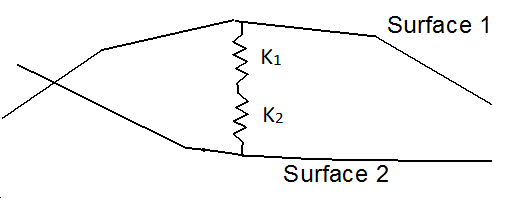
Figure 2. Interface Springs in Series
- Stiffness scaling factor. Default is 0.2.
- Surface 1 Stiffness
- Surface 2 Stiffness
- Overall interface spring stiffness
The scale factor, , may have to be increased if:
or
The calculation of the spring stiffness for each surface is determined by the type of elements.
For example:
implies or .
Shell Elements
For more information, refer to Shell Element.
Brick Elements
For more information, refer to Brick Element.
Combined Elements
For more information, refer to Combined Elements.
Interface Friction
TYPE5 interface allows sliding between contact surfaces.
Coulomb friction between the surfaces is modeled. The input card requires a friction coefficient. No value (default) defines zero friction between the surfaces.
The friction computation on a surface is the same as for TYPE3 interface. Refer to Interface Friction.
- Darmstad Law:
-
(2) - Renard Law:
-
(3)
Where, the coefficient depends on the Ifiltr flag value.
Interface Gap
Refer to Interface Gap for TYPE3 interface.
Interface Algorithm
- Determine the closest main node.
- Determine the closest main segment.
- Check if the secondary node has penetrated the main segment.
- Calculate the contact point.
- Compute the penetration.
- Apply forces to reduce penetration.
For more information, refer to Auto Contacts.
Detection of Closest Main Node
The Radioss Starter and Engine use different methods to determine the closest main node to a particular secondary node.
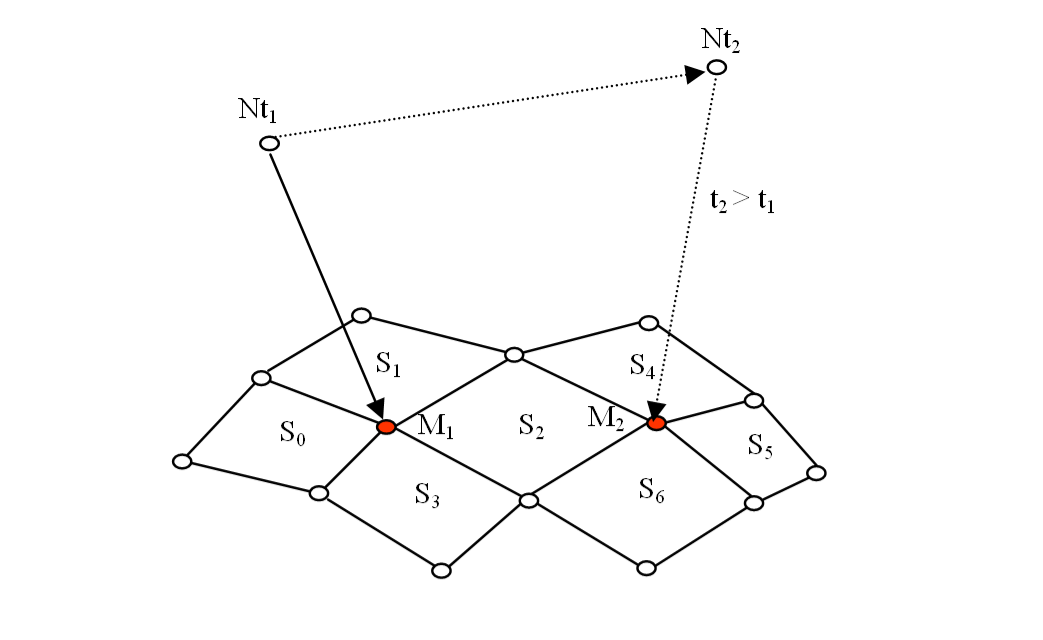
Figure 3. Search Method
- Get the previous closest segment, , to node at time .
- Determine the closest node, , to node which belongs to segment .
- Determine the segments connected to node (, , and ).
- Determine the new closest main node, , to node at time . The new main node must belong to one of the segments , , or .
- Determine the new closest main segment (, , and ).
- CPUstarter = a x Number of Secondary Nodes x Number of Main Nodes
- CPUengine = b x Number of Secondary Nodes
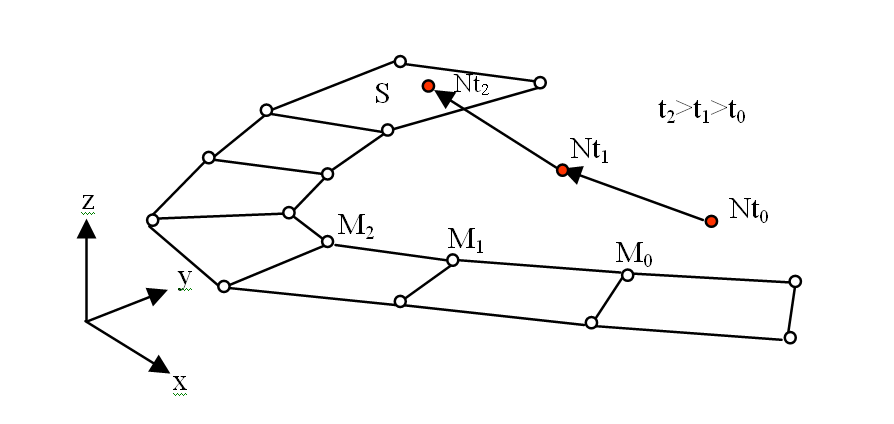
Figure 4. Undetected Impact
Detection of Closest Main Segment
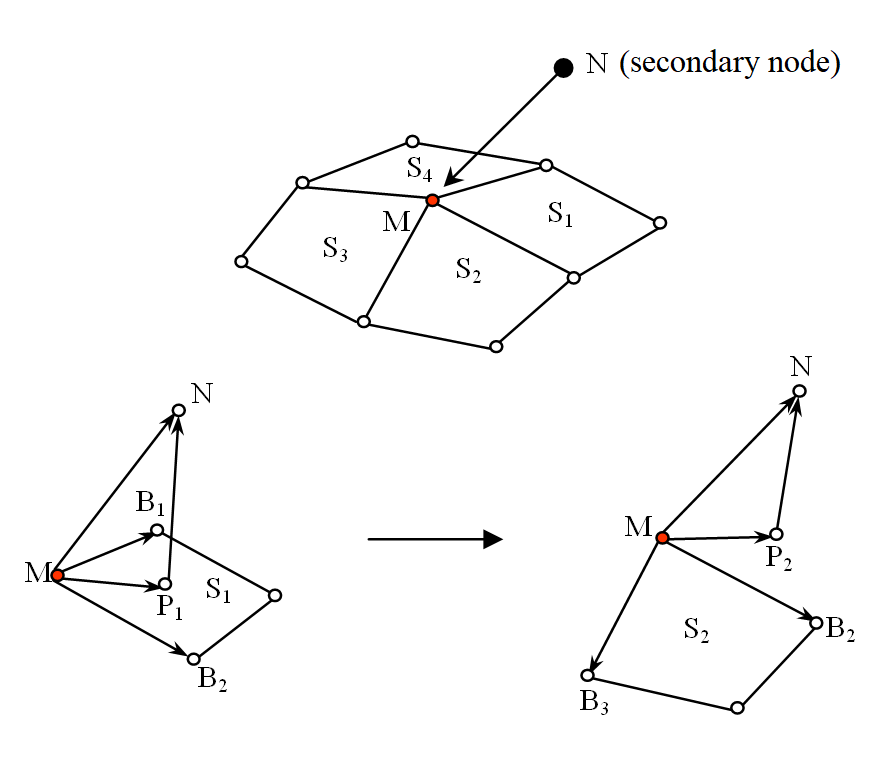
Figure 5. Closest Main Segment Determination Method
- Projection of on plane (, , )
- and
- Tangential Surface Vectors along segment edges.
- Projection of on plane (, , )
The same procedure is carried out for all main segments that node is connected to.
The closest segment is the segment for which is a minimum.
- All values of are positive.
- More than one value of is negative.
Detection of Penetration
Penetration is detected by calculating the volume of the tetrahedron made by secondary node and the main nodes of the corresponding main segment, as shown in Figure 6.
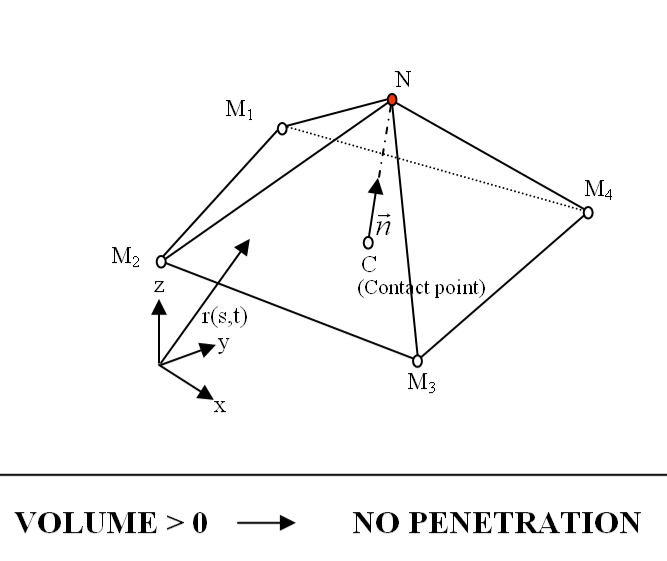
Figure 6. Tetrahedron used for Penetration Detection
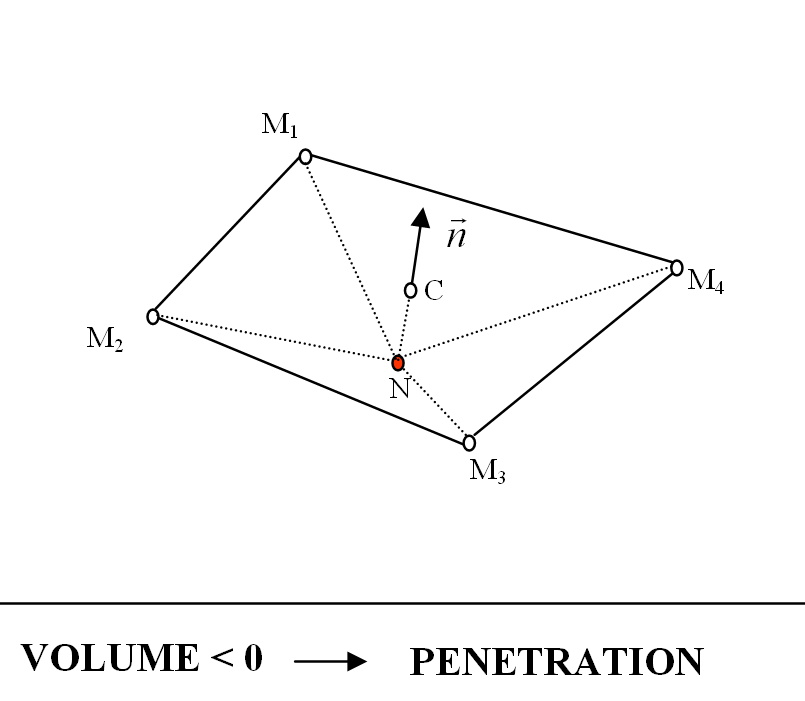
Figure 7. Negative Volume Tetrahedron - Penetrated Node
Reduction of Penetration
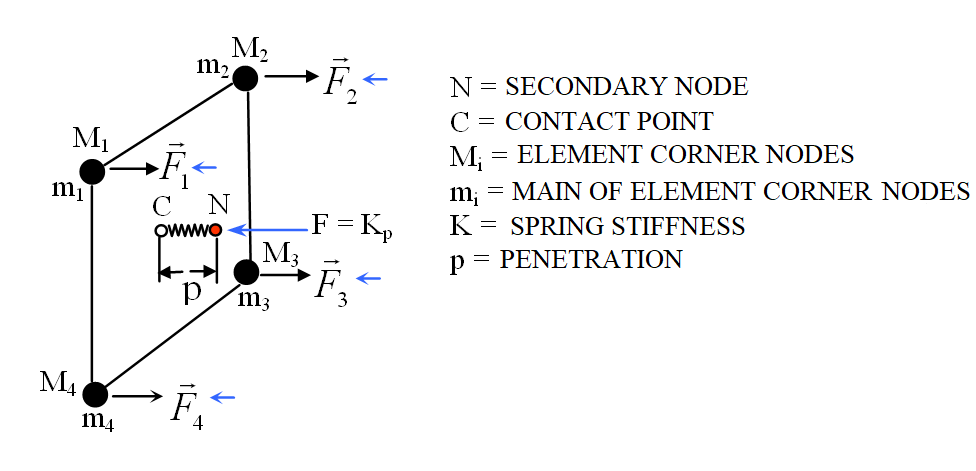
Figure 8. Forces Associated with Penetration
Where, is the interface spring stiffness.
Where,
- Standard linear quadralateral interpolation functions
- and
- Isoparametric coordinates contact point
- Accuracy
- Generality
- Efficiency
- Compatibility